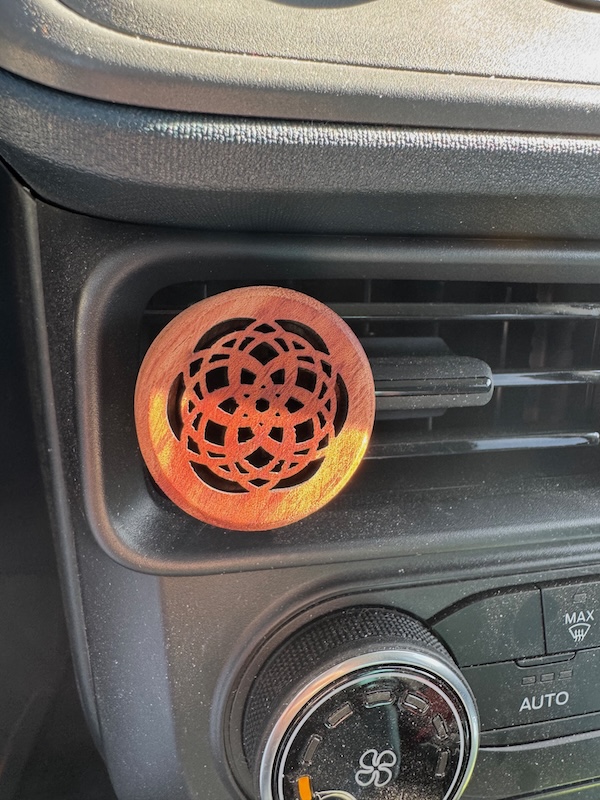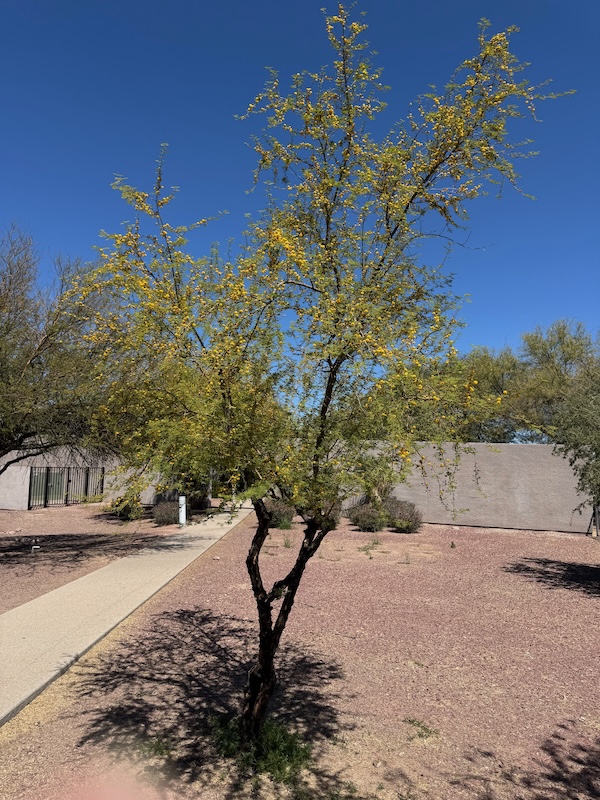It started with a bottle of spearmint oil.

Early in our Arizona stay, we came across a local market—just a weekend pop-up in a Barnes & Noble parking lot off Ina Road. One of the booths sold essential oils, hand-bottled, and I thought: why not use this instead of a commercial air freshener? I had read somewhere—probably a college study with limited scope—that peppermint oil could help with alertness. So I bought a little wood diffuser for the truck and dabbed it with peppermint. It worked—or at least felt like it did.
When I ran low, I figured I’d try spearmint instead.
This morning, after working on a project at the library, I walked to the truck and caught the new scent—spearmint, warmed by the Arizona sun. And it hit me: spearmint really does just smell like chewing gum. Not sure I like that.
But something else happened on that walk.
I passed a woman—maybe in her 30s—walking with a cane, clearly favoring her right hip or leg. And without warning, my first internal response was: Well, at least that’s not me.
The thought surprised me. It startled me. Because it wasn’t just a reflex. It was a judgment—an unspoken ranking of her life versus mine. It came with all kinds of assumptions: about wholeness, about health, about how we unconsciously compare ourselves to others as a way to measure… what? Gratitude? Worth?
It reminded me of something I once heard from Brené Brown—the difference between empathy and sympathy. I used to show that animated video in workshops, the one with her voiceover explaining how unhelpful it can be to say “at least…” when someone’s in a dark place. “At least you can still…” “At least it’s not worse…” We think we’re helping. But really, we’re creating distance. We’re reinforcing the gap between us and them.
And today I caught myself doing just that—with a stranger.
Comparison breeds judgment. Not just of others, but of ourselves. That impulse to say at least I’m not… doesn’t lift anyone up—it reinforces the idea that someone else’s pain is useful only as a contrast to our own comfort.
So what’s the alternative?

Maybe it’s presence. Maybe it’s sitting—with the discomfort, with the judgment, with the awkwardness of not knowing what to say. Mindfulness teaches that when a thought arises, you don’t push it away. You notice it. You let it be there. If you try to swat it down, it just comes back—like Nico the cat pawing at your leg.
Instead, you sit.
You say: I don’t know what to say, but I’m glad you told me.
You say it to others. You say it to yourself.
And in this case, you say it to the version of you who reacted with distance instead of closeness.
As I kept walking, the woman with the cane moved on—faster than I expected. She’s out of sight now. But maybe she was there just long enough for the thought to sit with me. Just long enough to remind me how easy it is to drift into judgment—and how hard, and necessary, it is to return to empathy.
Oh, and for the record: spearmint still smells like gum. I think I’ll go back to peppermint.

